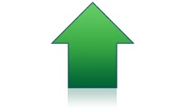Economy

May Manufacturing Growth Slows, Demand Edging Down: PMI
Written by David Schollaert
June 5, 2022
The S&P Global US manufacturing PMI – another measure of manufacturing – fell to 57 in May, its lowest level in four months, and a noticeable turn from the market improvement the month prior.
Last month’s results are down from 59.2 in April and a “flash” May reading of 57.5. (Recall that a reading above 50.0 indicates growth.) The report said the manufacturing upturn slowed amid cooling demand, surging costs, and material shortages. In particular, cost inflation accelerated to the fastest pace in six months even though delivery delays were the least widespread in 16 months.
“A cooling in new orders growth was in part linked to customers pushing back on high prices, though also reflected shortages and growing concern about the outlook, said Chris Williamson, S&P Global Market Intelligence’s chief business economist.
Output growth at manufacturers was strong, driven by client demand, and an uptick in new orders supported the upturn in production. Despite the gain, the rate of expansion was the slowest over the past three months due to material shortages and delivery delays. A softer rise in order book totals resulted as inflows began to stymie growth momentum, the report said.
New orders rose sharply in May, with higher new sales inflows often attributed to a sustained rise in customer demand and the acquisition of new clients. That said, the pace of growth softened further from March’s recent peak and was the slowest seen since January. Foreign client demand also softened, with export orders rising at the slowest rate for four months. Global uncertainty due to the war in Ukraine and challenging logistics reportedly weighed on the upturn.
“A solid expansion of manufacturing output in May should help drive an increase in GDP during the second quarter, with production growth running well above the average seen over the past decade,” said Williamson. “However, the rate of growth has slowed as producers report ongoing issues with supply chain delays and labor shortages, as well as slower demand growth.”
By David Schollaert, David@SteelMarketUpdate.com

David Schollaert
Read more from David SchollaertLatest in Economy

Construction adds 13,000 jobs in March
The construction sector added 13,000 jobs, seasonally adjusted, in March, but tariffs could undermine the industry.

Supply chains, end-users brace for impact from tariffs
Supply chains are working through what the tariffs mean for them

ISM: Manufacturing expansion loses steam after two months of growth
US manufacturing activity slowed in March after two straight months of expansion, according to supply executives contributing to the Institute for Supply Management (ISM)’s latest report.

Chicago Business Barometer rose to 16-month high in March
The Chicago Business Barometer increased for the third-consecutive month in March. Despite this, it still reflects contracting business conditions, as it has since December 2023.

Durable goods orders rise again in February
Transportation equipment led the increase, rising 1.5% to $98.3 billion.
